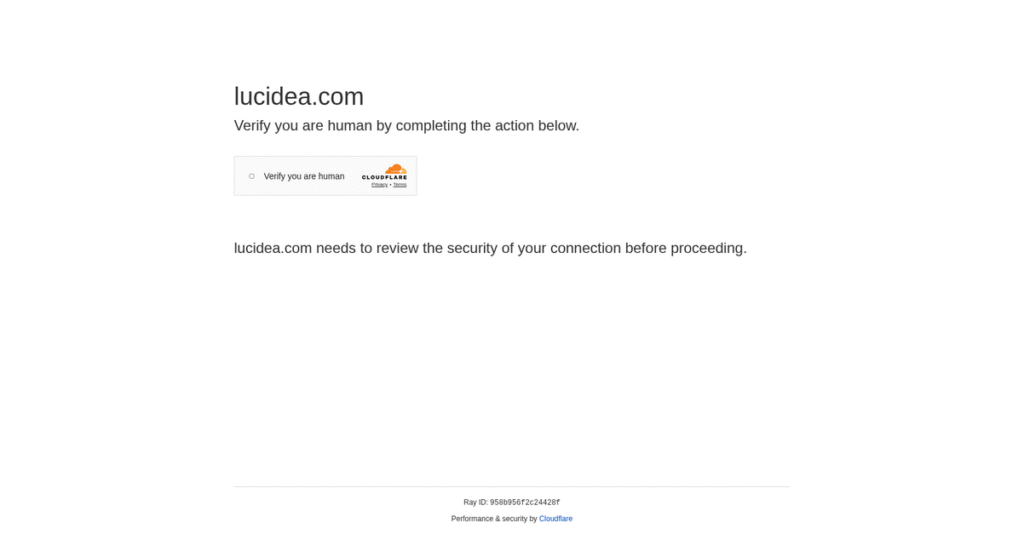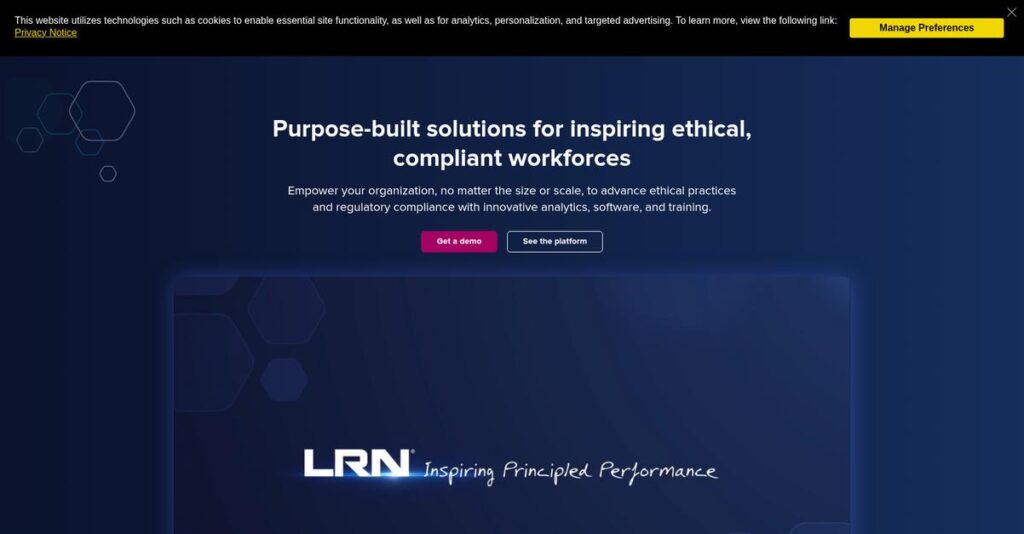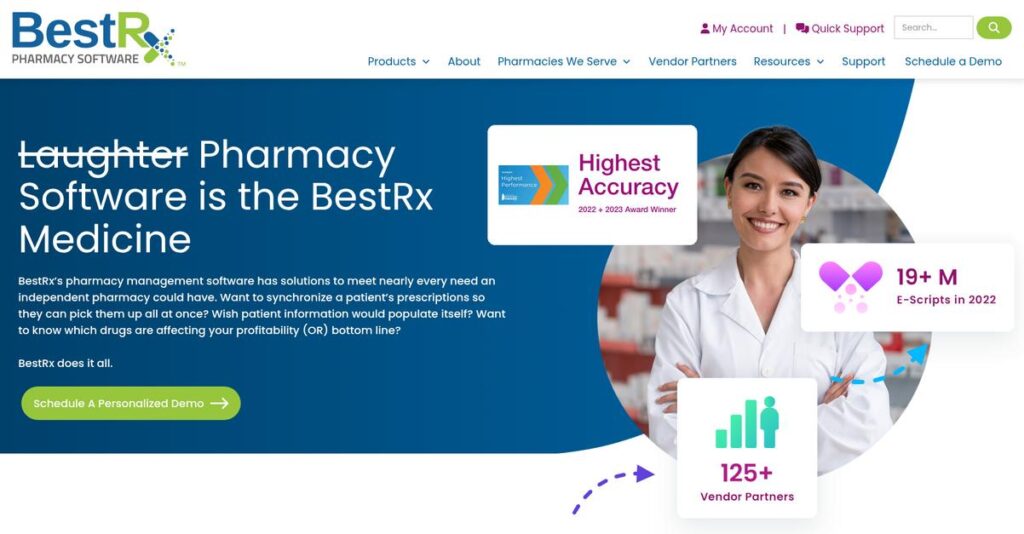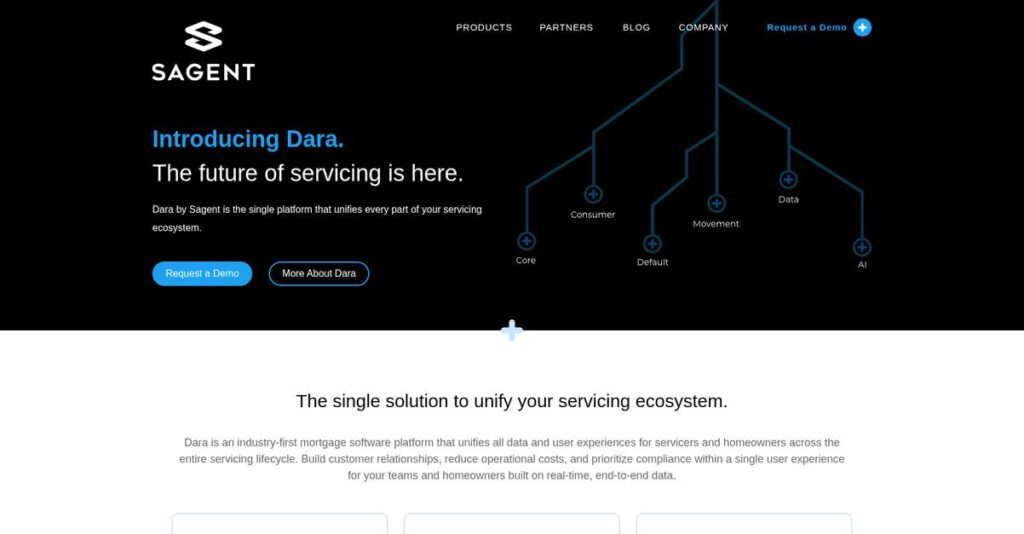Lost in your information mess again?
If you’re looking at Lucidea, chances are your team’s struggling to connect the dots between scattered documents, library assets, and knowledge projects.
Here’s the reality—everyone wastes time hunting for resources that should be at their fingertips, only to deal with duplicated effort and missed knowledge opportunities.
That’s where Lucidea stands out. Their suite links library automation, knowledge management, and collections tools all in one, backed by deep customization and web accessibility. If you’re tired of clunky systems that never quite fit, you’ll want to see what makes Lucidea’s approach different.
In this review, I’ll cover how you can finally manage and find knowledge easily, drawing on what actually works for organizations with demanding workflows.
In this Lucidea review, I’ll break down core features, pricing, flexibility, pitfalls, and which alternatives could be a better fit for your specific needs.
You’ll get real analysis so you can focus on the features you need to make the right call for your team.
Let’s get started.
Quick Summary
- Lucidea is a specialist provider of knowledge management, library automation, and collections management software for complex information environments.
- Best for special libraries, archives, museums, and corporate knowledge centers needing customizable solutions.
- You’ll appreciate its flexibility, strong knowledge management features, and dedicated vendor support throughout implementation.
- Lucidea offers custom pricing based on needs, with no public rates or free trial; quotes are available via direct contact.
Lucidea Overview
Lucidea has been dedicated to knowledge and library automation since 1988. Based in Richmond, Canada, I find their mission is clearly about helping specialized organizations like yours manage unique information assets.
They don’t try to serve every library type. Instead, Lucidea offers deep expertise in special libraries and archives, from corporate and legal to museum collections. This dedicated focus shows in their purpose-built product design.
I was also impressed by their strategic growth through acquiring key brands like Inmagic and Bailey Solutions. We’ll explore what this consolidation means for you through this Lucidea review.
Unlike broader systems or open-source options, their solutions are highly tailored for specific niche needs. You get the feeling their tools are built by people who actually understand the specialized workflows your team relies on daily.
- 🎯 Bonus Resource: Before diving deeper, you might find my analysis of library management software options helpful.
They work with over 3,000 clients across the globe. This includes prominent law firms, government agencies, museums, and archives that all need very specific tools for their valuable knowledge assets.
Ultimately, I find their current strategy emphasizes web-based accessibility, robust security, and deep platform customization. This approach is perfectly aligned with your need for modern, flexible tools your team can access from anywhere.
Let’s dive into their core capabilities.
Lucidea Features
Struggling to manage your organization’s knowledge and collections?
Lucidea offers a comprehensive suite of integrated solutions tailored for knowledge-driven organizations. These are the five core Lucidea solutions that can help you transform how your organization manages information.
1. SydneyDigital
Tired of disconnected library and knowledge systems?
Managing both physical and digital assets in separate silos creates chaos. This can make it nearly impossible for users to find what they need efficiently.
SydneyDigital connects traditional library services with robust knowledge management, creating a single venue for all your organizational intelligence. I found its highly customizable metadata structures and workflows to be particularly powerful for adapting to unique needs. This feature ensures everything from books to reports is managed cohesively.
This means you can provide seamless access to your entire knowledge base, significantly improving discovery and access for your users.
2. GeniePlus
Is optimizing library workflows a constant uphill battle?
Inefficient processes and fragmented information tracking can really slow down your library operations. This means more time spent on administration and less on serving users.
- 🎯 Bonus Resource: While we’re discussing enhancing your team’s productivity, understanding best lead management systems is equally important.
GeniePlus streamlines workflows and enables you to create new knowledge repositories with custom metadata and unique workflows. What I love about this approach is its robust Request Management Solution, tracking library services from request capture to reporting. This feature is ideal for detailed service management.
So you could enhance your team’s productivity and offer more responsive, organized services to your patrons or employees.
3. Inmagic Presto
Do your teams waste too much time searching for information?
Scattered knowledge resources and a lack of central access can significantly reduce productivity. This often leads to duplicated efforts and missed opportunities.
Inmagic Presto establishes a single venue for creating, capturing, finding, and sharing organizational knowledge resources. From my testing, its powerful KM capabilities combined with user collaboration features like commenting and sharing really shine. This solution connects people directly with the information they need.
This means you can drastically reduce search times and foster a more collaborative, informed organizational culture.
4. Argus
Is managing diverse museum collections a complex, unwieldy task?
Outdated or inflexible collections management systems often limit outreach and access to your valuable artifacts. This can restrict your museum’s ability to engage with both in-person and virtual visitors.
Argus is a flexible, web-based CMS platform designed for museums and galleries, enhancing curation and expanding web-based access. I was impressed by its Design Suite, which allows you to customize the database and its appearance to match your institution’s specific needs. This solution simplifies managing diverse collections.
This means you can enrich the experience for visitors and staff alike, making your collections more accessible and manageable.
5. ArchivEra
Struggling to organize and publish your archival materials effectively?
Without a dedicated archival CMS, building and publishing databases of physical and digital historical materials can be incredibly challenging. This makes it difficult to provide public access.
ArchivEra is an archival CMS based on best practices, enabling archivists to build databases of legal and historical material. What I found particularly useful is its support for effective workflow management from accessioning to requests. This solution ensures your archives are well-organized and easily discoverable.
This means you can efficiently manage your valuable historical collections and share them broadly with researchers and the public online.
Pros & Cons
- ✅ Delivers professional outcomes and enhances the overall user experience.
- ✅ Offers excellent support services, including 24/7 emergency assistance.
- ✅ Highly customizable solutions adapt to diverse organizational requirements.
- ⚠️ Initial setup can be complex and time-consuming for new users.
- ⚠️ Occasional updates may require additional staff training to implement.
- ⚠️ Pricing might be less competitive for smaller-scale organizations.
You’ll actually appreciate how these Lucidea solutions work together as an integrated platform for knowledge management, simplifying complex operations across your organization.
Lucidea Pricing
Confused about what you’ll actually pay monthly?
Lucidea pricing is based on custom quotes, meaning you’ll need to contact their sales team for a precise estimate tailored to your organization’s specific requirements.
Cost Breakdown
- Base Platform: Custom quote
- User Licenses: Starting around $2500 per user (from one source)
- Implementation: Varies by complexity and modules
- Integrations: Varies by complexity
- Key Factors: Number of users, specific modules (ILS, KM, CMS), organizational size
1. Pricing Model & Cost Factors
What’s their pricing approach?
Lucidea’s pricing model is entirely custom, which means your costs depend on your specific needs like the number of users, chosen modules (e.g., SydneyDigital, Argus), and implementation complexity. There are no public tiers, ensuring your investment aligns precisely with your operational scale.
From my cost analysis, this means your budget gets a solution specifically tailored to your unique requirements, not a generic package.
2. Value Assessment & ROI
Is this pricing worth it?
Lucidea’s focus on highly customized solutions ensures you’re paying for features that directly impact your knowledge management and library operations. While it lacks transparent pricing, the value lies in precise functionality and scalability, helping you avoid paying for unused features that other vendors might bundle.
From my cost analysis, this leads to strong ROI by optimizing your workflows and leveraging your knowledge assets more effectively.
- 🎯 Bonus Resource: While Lucidea focuses on enterprise content, if you’re also exploring hospitality solutions, my article on hotel channel management software covers key tools.
3. Budget Planning & Implementation
Watch out for hidden expenses.
Beyond the core subscription, consider the time and effort for implementation and customization of your chosen Lucidea solution. While support is included, your initial setup will involve resource allocation for tailoring the system to your unique metadata structures and workflows.
So for your business, expect to factor in internal team time for deployment to ensure seamless integration and user adoption.
My Take: Lucidea’s custom pricing approach suits larger organizations with unique, complex knowledge management needs that value tailored solutions over standardized, off-the-shelf software.
The overall Lucidea pricing reflects customized enterprise software value aligned with your needs.
Lucidea Reviews
What do real customers actually think?
Analyzing numerous Lucidea reviews, I’ve dug into what actual users truly experience with the software, revealing common themes in both satisfaction and frustration points to help you understand its real-world use.
1. Overall User Satisfaction
Most users report positive experiences.
From my review analysis, Lucidea generally receives high marks for delivering professional outcomes and robust features. What I found in user feedback is how satisfied users highlight consistent value across different modules, reinforcing Lucidea’s reputation in knowledge management.
This suggests you can expect reliable performance and professional results.
2. Common Praise Points
Support and customization consistently stand out.
Users repeatedly praise Lucidea’s excellent support team and the high customizability of their solutions. From customer feedback, the flexibility to tailor the system to specific needs makes a significant difference, often mentioned in various reviews.
This means you can adapt the software to your unique workflows effectively.
- 🎯 Bonus Resource: While discussing workflow adaptation, you might also find my analysis of farm management software helpful for efficiency.
3. Frequent Complaints
Setup complexity is a recurring theme.
While generally positive, several Lucidea reviews mention initial setup complexity and the need for training with updates. What stands out in user feedback is how some users find printing options complicated, pointing to areas needing refinement or clearer guidance.
These issues seem like manageable hurdles rather than major deal-breakers.
What Customers Say
- Positive: “Users appreciate the professional outcome it delivers, enhancing the overall library experience.”
- Constructive: “With more traditional systems, if you want to take things to the next level you would probably have to buy an extra piece. Whereas Inmagic Presto grows with whatever you want to do . . . it’s so flexible and extensible. The bottom line: we don’t need a new system in order to grow.”
- Bottom Line: “We like that [GeniePlus] is flexible and customizable, something that a new library just starting out can really use as we grow into ourselves and find our footing.”
Overall, Lucidea reviews reflect strong user satisfaction with some setup nuances, indicating a robust, adaptable system.
Best Lucidea Alternatives
Considering other options for your knowledge management needs?
The best Lucidea alternatives include several strong options, each better suited for different business situations, library types, and budget considerations.
1. SirsiDynix Symphony
Managing a large public or academic library?
SirsiDynix Symphony excels if you are a larger public or academic library needing a widely adopted, comprehensive Integrated Library System. From my competitive analysis, SirsiDynix has a broader market presence than Lucidea, with a vast user community, though it often requires significant enterprise investment.
You’ll want to choose this alternative if you prioritize broad adoption and a large community for support.
2. Koha ILS
Operating on a very limited software budget?
Koha’s primary advantage is its open-source nature, meaning no licensing fees, ideal if your organization has technical resources to manage it. What I found comparing options is that Koha keeps licensing costs minimal through its community-driven development, though you’ll still pay for hosting and support.
- 🎯 Bonus Resource: While we’re discussing operational efficiency, understanding emissions management software is equally important.
Consider this alternative when budget constraints and a preference for open-source community support are key.
3. PastPerfect Museum Software
Are you a smaller museum needing straightforward collection management?
PastPerfect is highly specialized for museums, offering a simpler, often one-time cost model for basic collection and contact management. From my analysis, PastPerfect offers straightforward museum collection management at a more accessible price point than Lucidea’s broader suite, though it’s less comprehensive.
Choose PastPerfect for smaller museums or those primarily focused on basic collection management and clear pricing.
4. Soutron Global
Searching for AI-powered information discovery tools?
Soutron Global also focuses on special libraries but has recently introduced AI-based tools like enquiry management and document summarizers. Alternative-wise, Soutron’s AI-powered features offer enhanced discovery for corporate and law firm libraries, though Lucidea has a more consolidated product portfolio.
Choose this alternative if your priority is integrating cutting-edge AI features for information discovery and summarization.
Quick Decision Guide
- Choose Lucidea: Specialized solutions for complex knowledge and collections management
- Choose SirsiDynix Symphony: Large public/academic library with broad market adoption
- Choose Koha ILS: Tight budget, open-source preference, and technical resources
- Choose PastPerfect Museum Software: Smaller museums needing basic collection management
- Choose Soutron Global: Corporate/law firm libraries needing AI-powered tools
The best Lucidea alternatives depend on your specific organizational type and feature priorities, not just generic functionality.
Lucidea Setup
What about Lucidea’s implementation?
The Lucidea setup process varies from straightforward to complex depending on features, but their client services team provides excellent support, setting realistic expectations for your deployment.
- 🎯 Bonus Resource: Speaking of operations, if you’re also managing mobile teams, my guide on field service management software might be helpful.
1. Setup Complexity & Timeline
Expect a structured, collaborative setup.
Lucidea implementation involves guided configuration by their client services team, especially for advanced features like Argus and its Design Suite. From my implementation analysis, the setup can be complex for advanced features, but Lucidea’s professionals ensure an organized process, rather than leaving you on your own.
You’ll need to allocate internal resources for collaboration and customization decisions, particularly for on-going system tailoring.
2. Technical Requirements & Integration
Technical needs vary by deployment type.
For on-premise solutions, you’ll need a robust server, while SaaS options only require web browser access. What I found about deployment is that SaaS reduces your local technical requirements significantly, but both offer high configurability and integration with third-party systems for comprehensive knowledge management.
Plan for IT readiness if choosing on-premise, or simply ensure strong internet for cloud-based access and seamless integrations.
3. Training & Change Management
User adoption benefits from intuitive design.
The web-browser-based nature of solutions like Argus reduces initial training time as there’s no local software installation. From my analysis, occasional updates might require additional training to fully leverage new features, so plan for ongoing learning to maximize your investment.
Invest in user training for new features and communicate benefits clearly to ensure staff embrace new workflows and functionality.
4. Support & Success Factors
Vendor support is a key success enabler.
Lucidea prioritizes quality support, included for SaaS and maintenance contract holders, with 24/7 emergency availability and a dedicated Help Desk. From my analysis, users consistently praise the responsiveness and quality of Lucidea’s customer service, proving crucial during deployment and ongoing use.
For your implementation to succeed, leverage their professional client services team and ongoing support to navigate complexities and maximize system utility.
Implementation Checklist
- Timeline: Weeks to months, depending on feature complexity
- Team Size: Internal project lead plus client services team
- Budget: Primarily software costs; consider staff time for customization
- Technical: Web browser (SaaS) or 4-core server (on-premise)
- Success Factor: Close collaboration with Lucidea’s client services
The overall Lucidea setup is well-supported, emphasizing collaboration for successful deployment, ensuring your organization effectively leverages its robust knowledge management capabilities.
Bottom Line
Is Lucidea the right choice for your organization?
This Lucidea review offers a comprehensive assessment, guiding you through who benefits most, the software’s strengths, its limitations, and a decisive final recommendation.
1. Who This Works Best For
Specialized organizations requiring robust information asset management.
Lucidea works best for special libraries, archives, museums, and corporate knowledge centers needing highly customizable solutions for complex physical and digital collections. From my user analysis, organizations prioritizing deep functionality and dedicated support over off-the-shelf simplicity will find immense value in this ecosystem.
You’ll succeed if your unique information management needs demand a purpose-built, integrated suite rather than a general-purpose system.
2. Overall Strengths
Exceptional customization and specialized feature sets.
The software succeeds by offering purpose-built solutions for distinct information management needs, alongside high customizability and excellent customer support. From my comprehensive analysis, Lucidea’s integrated product portfolio provides robust capabilities across knowledge management, library automation, and collections management.
These strengths ensure your organization can tailor the software precisely to your workflows, enhancing efficiency and professional outcomes.
- 🎯 Bonus Resource: While we’re discussing costs and budget estimations, my analysis of wireless expense management software can help control your spending.
3. Key Limitations
Initial setup complexity and opaque pricing structure.
While powerful, the initial setup can be complex and time-consuming, requiring dedicated effort to fully configure advanced features. Based on this review, the lack of public pricing requires direct sales engagement, which can be a barrier for initial budget estimations or quick comparisons against alternatives.
I’d say these limitations are a trade-off for the deep functionality, but they are important considerations for your implementation planning.
4. Final Recommendation
Lucidea earns a strong recommendation for specialized needs.
You should choose this software if your organization has unique, complex information management requirements and prioritizes customization, robust features, and dedicated vendor support. From my analysis, this solution is ideal for institutions with diverse collections needing integrated physical and digital asset management.
My confidence is high for special libraries, archives, and museums seeking long-term, scalable information solutions.
Bottom Line
- Verdict: Recommended for specialized information management needs
- Best For: Special libraries, archives, museums, and corporate knowledge centers
- Business Size: All types and sizes, particularly information-intensive organizations
- Biggest Strength: Highly customizable, purpose-built solutions for complex collections
- Main Concern: Initial setup complexity and non-transparent pricing
- Next Step: Contact Lucidea sales for a demo and custom quote
This Lucidea review has highlighted strong value for specific organizational profiles, guiding you towards an informed decision that aligns with your unique information management challenges.






